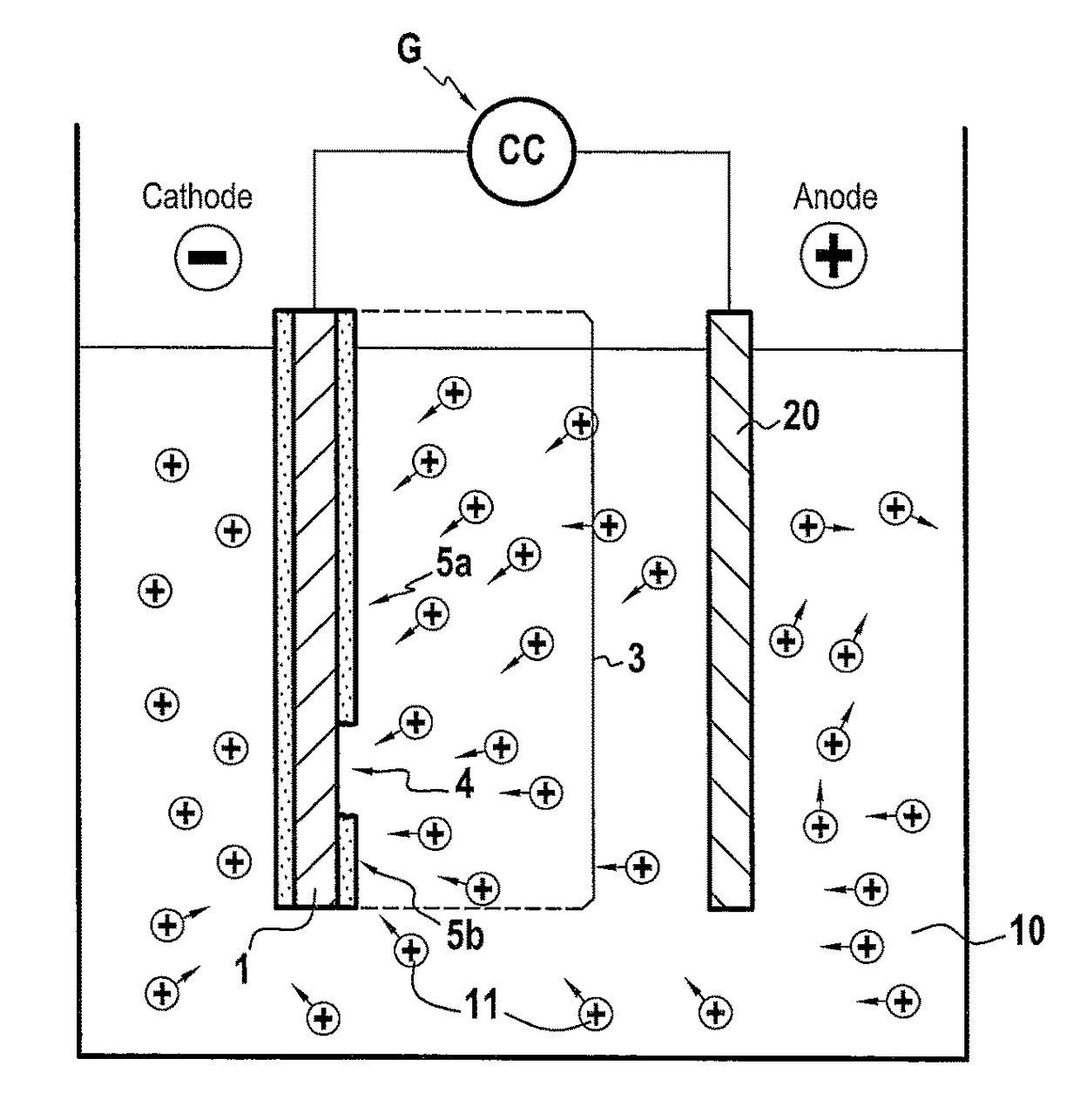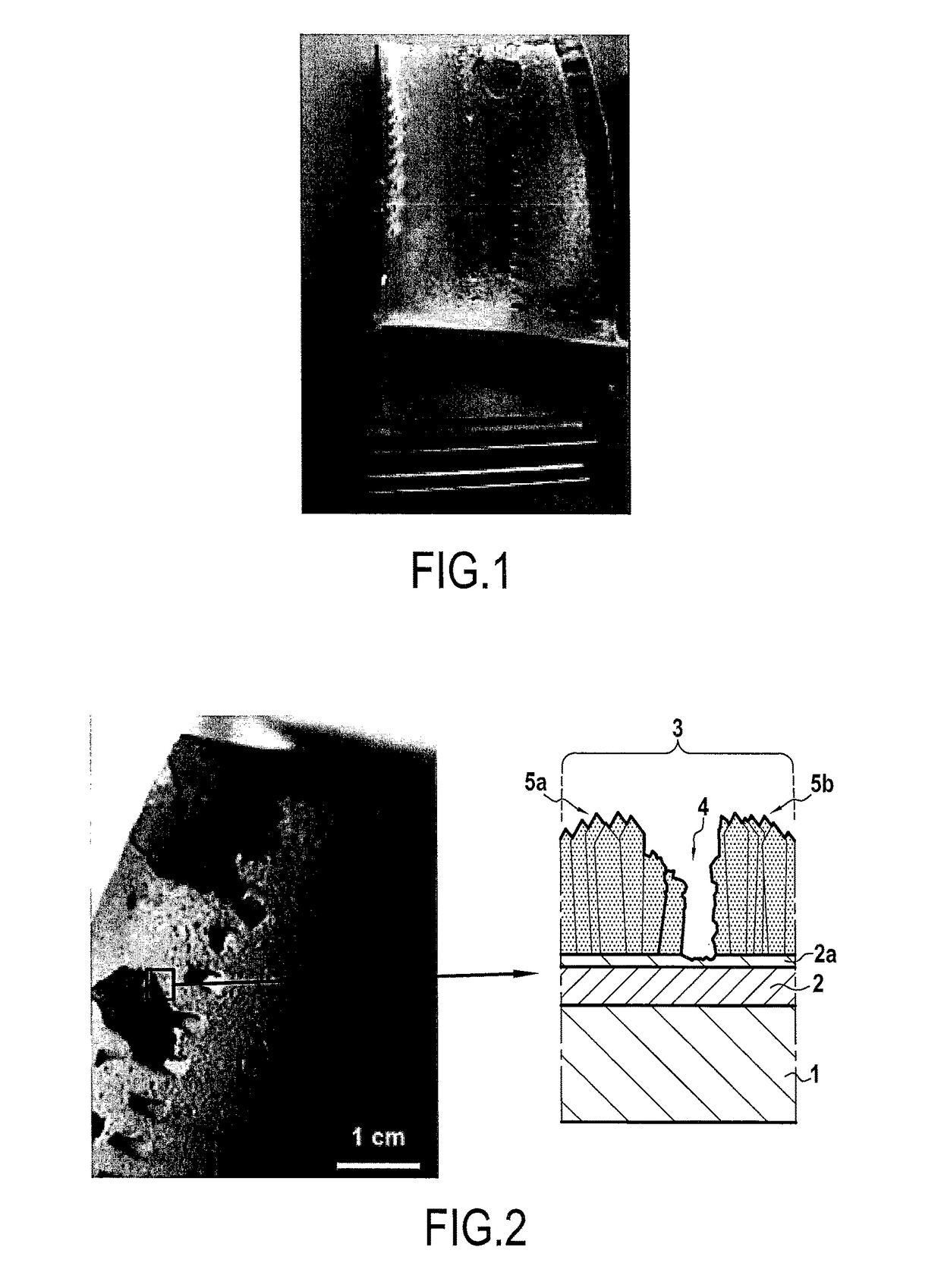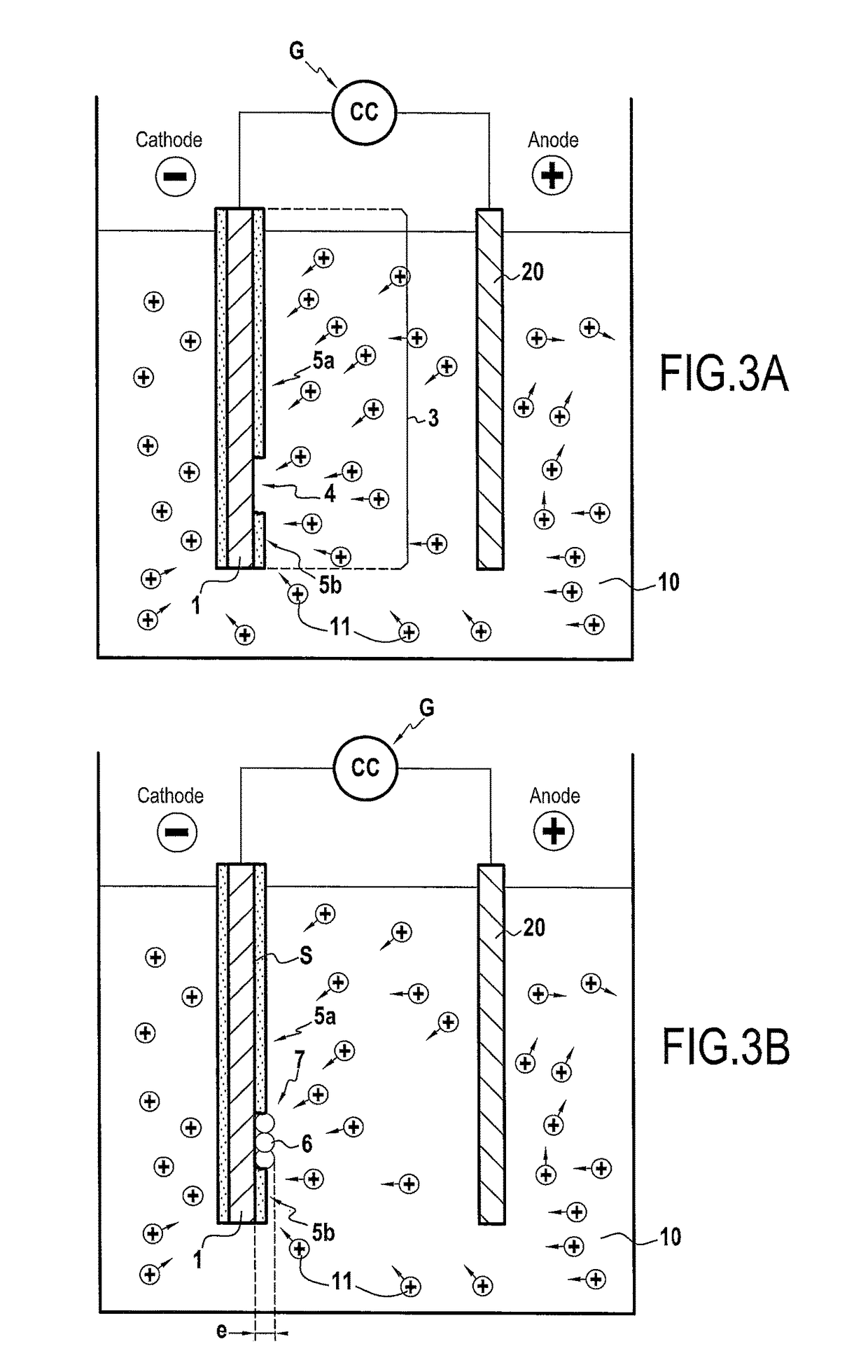Method for localised repair of a damaged thermal barrier
a thermal barrier and localization technology, applied in the direction of electrophoretic coatings, mechanical equipment, machines/engines, etc., can solve the problems of thermal barrier damage that may even need to be discarded, certain zones of the system may be damaged in high temperature service, and oxidation of the underlying part, so as to enhance the deposition of ceramic coatings and improve the electrically conductive nature of damaged zones.
- Summary
- Abstract
- Description
- Claims
- Application Information
AI Technical Summary
Benefits of technology
Problems solved by technology
Method used
Image
Examples
example
[0071]Use was made of a nickel-based superalloy part coated by an yttria-stabilized zirconia (YSZ) thermal barrier obtained by electron beam physical vapor deposition (ED-PVD). The thermal barrier was initially damaged by water jet. FIG. 4A shows the result obtained after damaging.
[0072]Electrophoresis deposition was performed using a suspension of YSZ powder in isopropanol (10 g / L) at a voltage of 100 V for six minutes. A photograph of the part after treatment by the method of the invention is shown in FIG. 4B.
[0073]It can be seen that a covering and uniform deposit of yttria-stabilized zirconia is obtained throughout the damaged zone.
[0074]The term “comprising / containing a / an” should be understood as “comprising / containing at least one”
[0075]The term “lying in the range . . . to . . . ” should be understood as including the limits of the range.
PUM
| Property | Measurement | Unit |
|---|---|---|
| temperatures | aaaaa | aaaaa |
| concentration | aaaaa | aaaaa |
| voltage | aaaaa | aaaaa |
Abstract
Description
Claims
Application Information
 Login to View More
Login to View More - R&D
- Intellectual Property
- Life Sciences
- Materials
- Tech Scout
- Unparalleled Data Quality
- Higher Quality Content
- 60% Fewer Hallucinations
Browse by: Latest US Patents, China's latest patents, Technical Efficacy Thesaurus, Application Domain, Technology Topic, Popular Technical Reports.
© 2025 PatSnap. All rights reserved.Legal|Privacy policy|Modern Slavery Act Transparency Statement|Sitemap|About US| Contact US: help@patsnap.com



